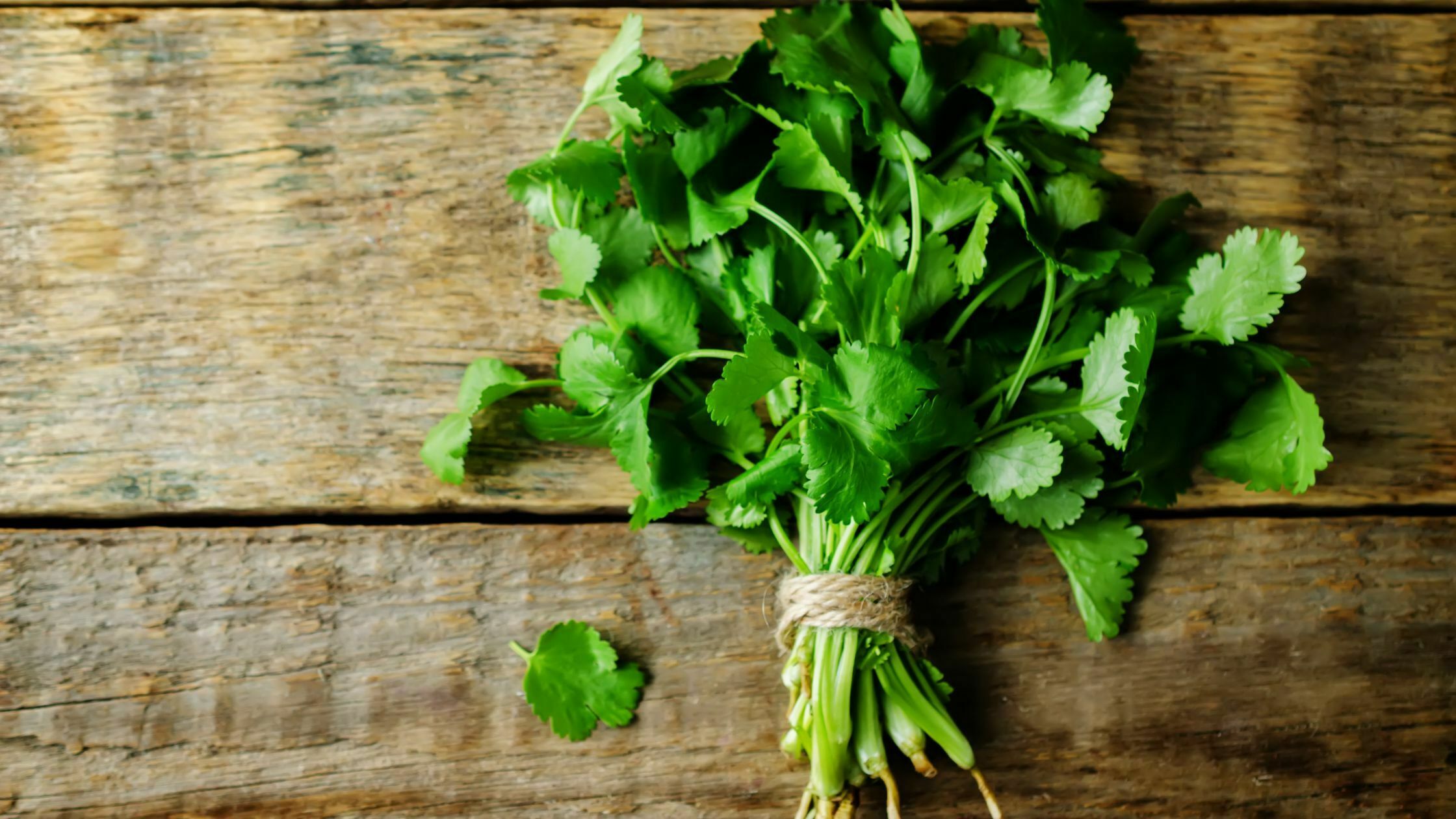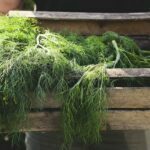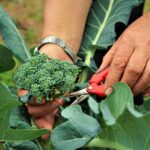If you have taken growing cilantro into your own hands, harvesting is in your future, and learning how to do it correctly is a must. If you are new to growing herbs, you may want to research and learn how to harvest cilantro properly.
Suppose you love cilantro in your favorite dishes, then why not cultivate your own? Growing food is fun and easy if you do proper research first. Cilantro is an annual herb that you harvest more often; the bigger and stronger your plant will grow.
Though it may seem a little intimidating, harvesting cilantro is incredibly simple. As long as you follow a few easy guidelines and make sure you have the right tools, you have nothing to worry about. Learn how to harvest cilantro to get the most out of your plants.
How to Harvest Cilantro
Harvesting only what you need is highly recommended so your cilantro plant will keep growing.
To harvest cilantro leaves.
- Using scissors, snip off whole stems right next to the base of the plant.
- Generally, it’s best to work from the outside stems because the outside stems are the oldest.
- Once your cilantro plant has grown at least six inches tall, you may begin harvesting cilantro leaves.
- Pick leaves off individually or choose small stalks to trim with scissors for fresh use. Harvest fresh cilantro leaves throughout the cool-weather growing season until the plant bolts; the leaves will taste bitter after it bolts.
Cilantro leaves can be eaten fresh or dried and stored in an airtight container.
Recommended Product: Pruning Softouch Micro-Tip Snip
[amazon box=”B07N7963CH” class=”lp-product-list” template=”vertical” image_size=”large” title=” ” image_alt=”alttexthere” description=”none” price=”none” button_text=”Check Latest Price” ]
Fiskars soft-touch micro-tip pruning Snip makes deadheading, trimming, and shaping plants easy.
Its design opens the blades after each cut to reduce hand strain, and the high-grade, stainless-steel blades feature a precision-ground edge that stays sharp longer and cuts all the way to the tip for clean, healthy cuts on living plants.
Features:
- Non-Coated Blades
- Easy action
- Soft grip
To harvest coriander seeds
- Allow your plant to bolt and grow seeds.
- Once the leaves and seeds turn brown, snip off the stems with seed heads.
- Hang stems upside-down in a paper bag in a cool, dry place. Once the seeds are ripe, they will fall off the seed head and into the bag.
- Coriander seeds should be stored in an airtight container.
Recommended Product: Jenaluca Herb Scissors
[amazon box=”B00LRKMK96″ class=”lp-product-list” template=”vertical” image_size=”large” title=” ” image_alt=”alttexthere” description=”none” price=”none” button_text=”Check Latest Price” ]
Forget about tedious chopping. Two snips with sharp, finely balanced 5 blades equal 10 knife chops. Garnish with finesse; now, you can snip cilantro in perfectly sized pieces onto plates and pans.
Professional chef results with minimum mess. One quick swipe of the comb cover removes clinging herbs.
Features:
- Heavy duty
- Suitable for cutting, shredding, and cooking
- Stainless Steel
How to plant cilantro?
- Choose and prepare the soil bed. While it can tolerate light shade, cilantro grows best in full sun, so choose a spot that gets at least six hours a day. For the soil, opt for well-draining soil high in organic matter.
- Plant the seeds. Sow cilantro seeds one to two inches apart in rows spaced twelve inches apart.
- Keep the bed moist. Cilantro seeds need to be moist to germinate, so keep the soil moist (but not wet). As seedlings sprout, they need more water than mature cilantro plants to grow—give them about one inch of water weekly.
- Thin the seedlings. Once seedlings start to sprout, thin them to six inches apart.
Recommended Product: Sow Right Seeds – Cilantro Seed
[amazon box=”B07H5SLC95″ class=”lp-product-list” template=”vertical” image_size=”large” title=” ” image_alt=”alttexthere” description=”none” price=”none” button_text=”Check Latest Price” ]
Carefully selected variety that can easily be grown indoors in your kitchen or outdoors in the garden. Cilantro is a quick-growing annual that you can begin to harvest in as few as three weeks.
Always have fresh cilantro on hand; use fresh cilantro to add its distinctive flavor to your salsa, tacos, rice and beans, Asian stir-fry, and so much more. Your food will look and taste gourmet.
Features:
- Non-GMO
- Culinary herb
How to care for cilantro?
- Water. While growing seedlings need about one inch of water per week, established cilantro plants require much less; keep the soil moist and monitor your plants.
- Prune. While cilantro will start to bolt in hot weather (at the end of its life cycle), your plant may try to send up flowers earlier. Once the plant flowers, the leaves will taste bitter; pinch off early flower stalks to prevent bolting too soon.
- Clear weeds. Pick weeds early, so your cilantro plant doesn’t have to compete with weeds for nutrients. If you’re having problems with weeds, consider adding mulch to the soil to deter weed growth.
Will cilantro grow back after cutting?
Cilantro that is cut back entirely will eventually grow back, but it is recommended to cut just what you need at a time to encourage robust growth. If cilantro is grown under ideal conditions with regular harvests, the same plant will keep producing for many weeks.
How do you harvest cilantro without killing the plant?
All you need to do is take a few cilantro leaves, tie them up together in a bunch using a string and hang them upside down in a well-ventilated area. Once they’re dry and crumbling, store them in an air-tight container, like a glass jar.
How do I know when to harvest cilantro?
Cilantro leaves can be harvested anytime after the plant is 6 to 8 inches tall. Plants mature 60 to 75 days after sowing.
What is the best way to harvest cilantro?
- Snip cilantro leaves for fresh use after the plant is 6 inches tall. Small immature leaves have the best flavor. Pick just the top 2 to 3 inches to ensure continuous growth. Snip off the tops of stems before the plant flowers for a continued harvest of leaves. Continue picking leaves until the plant flowers.
- Pick leaves off individually or choose small stalks to trim with scissors for fresh use. Harvest fresh cilantro leaves throughout the cool-weather growing season until the plant bolts; the leaves will taste bitter after it bolts. Cilantro leaves can be eaten fresh or dried and stored in an airtight container.
Are coriander and cilantro the same plant?
The herb leaf called cilantro and the herb seed called coriander grow on the same plant. Cilantro is also known as Chinese parsley.
When does coriander appear?
Once the weather becomes too hot, your cilantro plant will naturally end its life cycle and bolt. This is when the plant produces clusters of flowers and grows seeds, called coriander.
How often should you harvest cilantro?
The general rule is never to take more than 30% of a single plant at a time. You can feel free to take stems and leaves from the plant as often as you need them.
Does cilantro grow flowers?
Cilantro has small delicate white to pale pink flowers that grow on flat clusters; one central flowering stem grows upright from the taproot; branches grow out from the stem.
What can you use cilantro leaves for?
Cilantro leaves are often used in Mexican and also Southeast Asia cooking. Mince leaves and add them to food or use them whole as a garnish. Chop fresh leaves and serve them with tomatoes, green onions, and minced garlic. Add minced leaves to sandwiches for a zippy flavor. Add leaves just before serving.
What can you use coriander seeds for?
Use coriander seeds on home-baked bread and flavor beets, onions, sausage, clams, and potatoes. Add seeds whole or ground to marinades, salad dressings, cheese, eggs, and chili sauce—toast seeds before adding to dishes. Dried seeds taste citrus; they can be chewed to relieve an upset stomach.
How to store fresh cilantro?
Fresh cilantro leaves can be kept in the refrigerator for up to a week; place the stems in water and put a plastic bag over the leaves to retain the aroma. Leaves lose their flavor and aroma when dried or frozen, so use them fresh.
Additional Tips on How to Harvest Cilantro
- Consider adding organic mulch to the soil to help with moisture retention.
- Cilantro is a great companion to many plants in your garden, like dill (How to Harvest Dill), potatoes, and tomatoes, as it attracts beneficial insects and can help some plants grow faster.
- The plant will bolt early if it’s left in temperatures hotter than 85 degrees.
- Parsley-like cilantro leaves can be snipped for fresh use when the plant is 6 to 8 inches tall.
- The round-ribbed coriander seed will be ready for harvest about 100 days after sowing.



